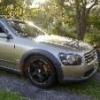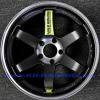M35 Stagea Fluid Change Guide - Oil - Atf - Ps - Attesa - Brakes
Announcements
-
Similar Content
-
Latest Posts
-
The car is still in paint jail. Here are some paint jail photos of things in primer and disassembled. I visited yesterday, though these photos were from about a month ago, the status is much the same. There's just more dust now. Especially inside the car too, which apparently is fine and normal... but I think I'll be never ever having a clean interior ever again lol. As this has dragged along, a few new parts have also arrived which was supposed to be well after paint... where Greg replaces every single bit of the engine except the bottom end. This is extreme LS nerd stuff dialed to 11/10 that's probably not really suited for target audience here. (and there's more in the mail, from the US). .
-
The GTT probably only has the same little bag of tools that the R32 had, which contained useless pliers, a spanner or two, a screwdriver thingo, and the handle and crank stuff for the jack.
-
Could someone post some pictures of the factory Jack , tools, spare tire and how they were in a 1998 ER34 2 door skyline originally?
-








Recommended Posts
Create an account or sign in to comment
You need to be a member in order to leave a comment
Create an account
Sign up for a new account in our community. It's easy!
Register a new accountSign in
Already have an account? Sign in here.
Sign In Now